VeX Robotics and the KNRC
 Recently I got the chance to participate in VeX Robotics competition which was organized by The KNRC (Kuwait NAtional Robotics Competition). I remember three years ago when I saw my first VeX Robotics match. I didn’t get it back then, why are people so interested in this competition? I remember reading the game manual for the first time. It seemed way too much for something that is just a “game”.
Recently I got the chance to participate in VeX Robotics competition which was organized by The KNRC (Kuwait NAtional Robotics Competition). I remember three years ago when I saw my first VeX Robotics match. I didn’t get it back then, why are people so interested in this competition? I remember reading the game manual for the first time. It seemed way too much for something that is just a “game”.
Much like football, outside observers who never got the chance to experience the actual game, won’t be able to relate to it or find that much joy in watching it. The same goes for online games being FPS, strategy, puzzles and the sort. You need to at least experience the game or understand some aspects of it to appreciate the amount of thought, strategy, creativity and planning that goes into it.
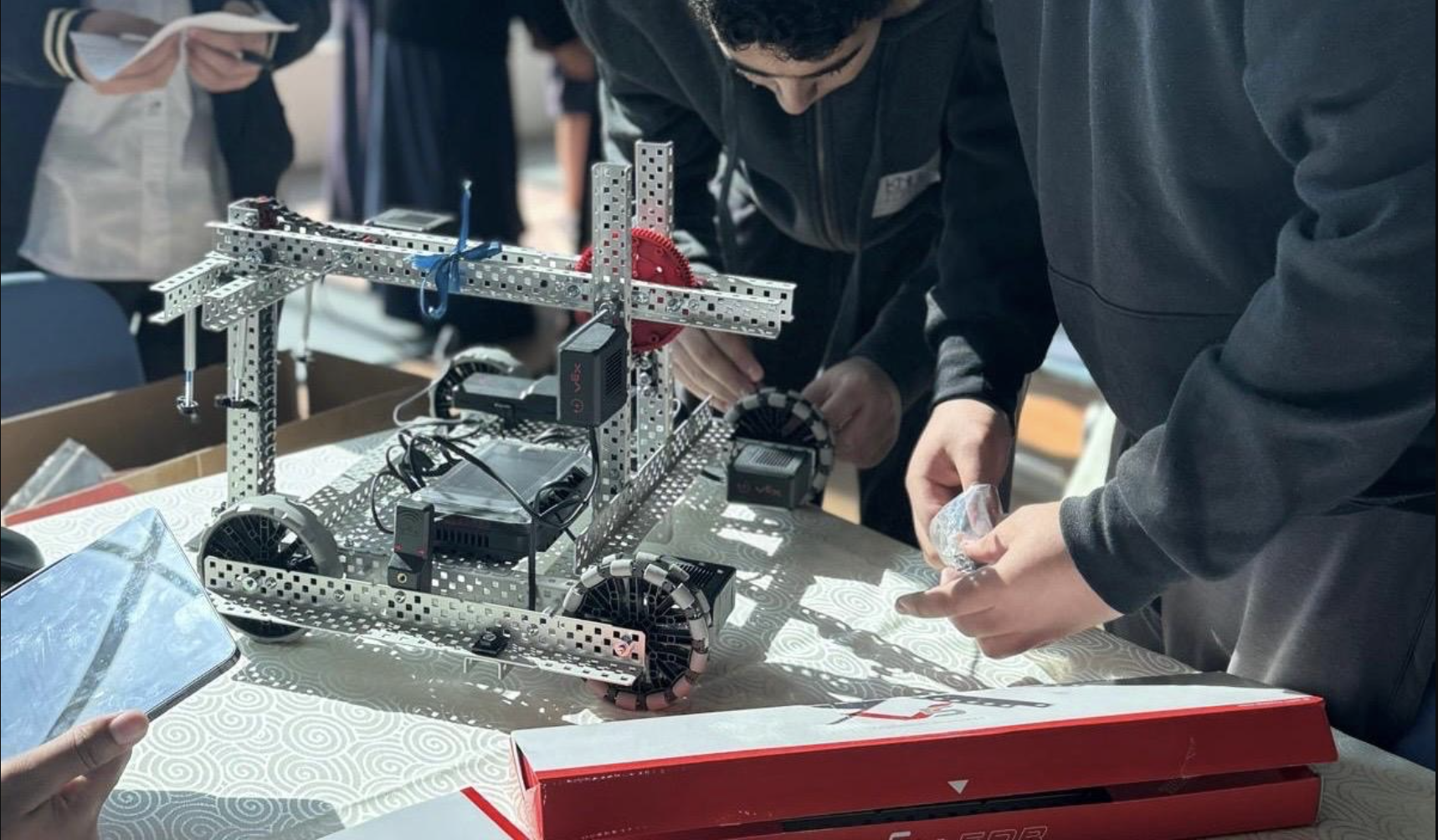
About VeX
VeX is a worldwide competition where the participants get to build a robot that represents a team of players. The robot design and components need to abide by VeX robotics rules. The robot is built to manipulate “objects” in order to score them into “goals”. The nature of objects and goals changes annually; every year there is a new game. This year’s game was called “High Stakes” where the scoring objects were “rings” and the goals were “stakes”. Some aspects remain fairly constant year after year, such as the field dimensions and some of the fundamental rules of the game.
Gamifying Learning
When I talk about VeX, I try not to focus on the REC foundation itself or how prestigious the VeX competition is. Instead, I like to focus on the goal or the purpose of taking part of this kind of competitions in the first place. It all comes down to utilizing the energy of the youth towards a productive and useful goals.
Benjamin Franklin said it best:
An investment in knowledge pays the best interest.
And what better way to kick off a journey of long life learning and exploration other than to join a Robotics Competition? It is a sure way to push the youth towards learning STEM (Science, Technology, Engineering and Mathematics) in an interesting and engaging way using Project Based Learning.
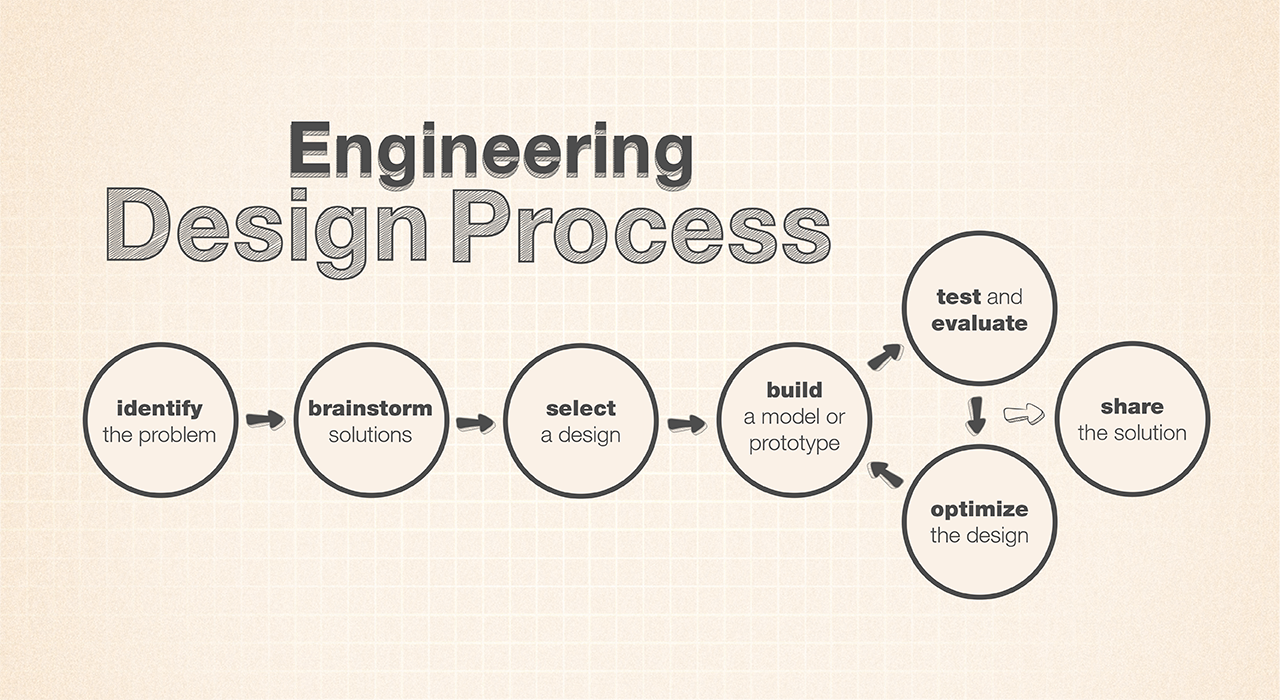
The Engineering Design Process
One of the most fundamental concepts students get to learn during VeX is called the Engineering Design Process. For me, this alone can provide a leap in student’s awareness that can make a big impact in student’s life and career. Similar to the scientific method which is taught at schools, the Engineering Design Process (EDP) offers steps to identify and solve problems. Both contribute towards enriching the student meta knowledge, a form of knowledge that helps the student apply the same concepts into other aspects of life.
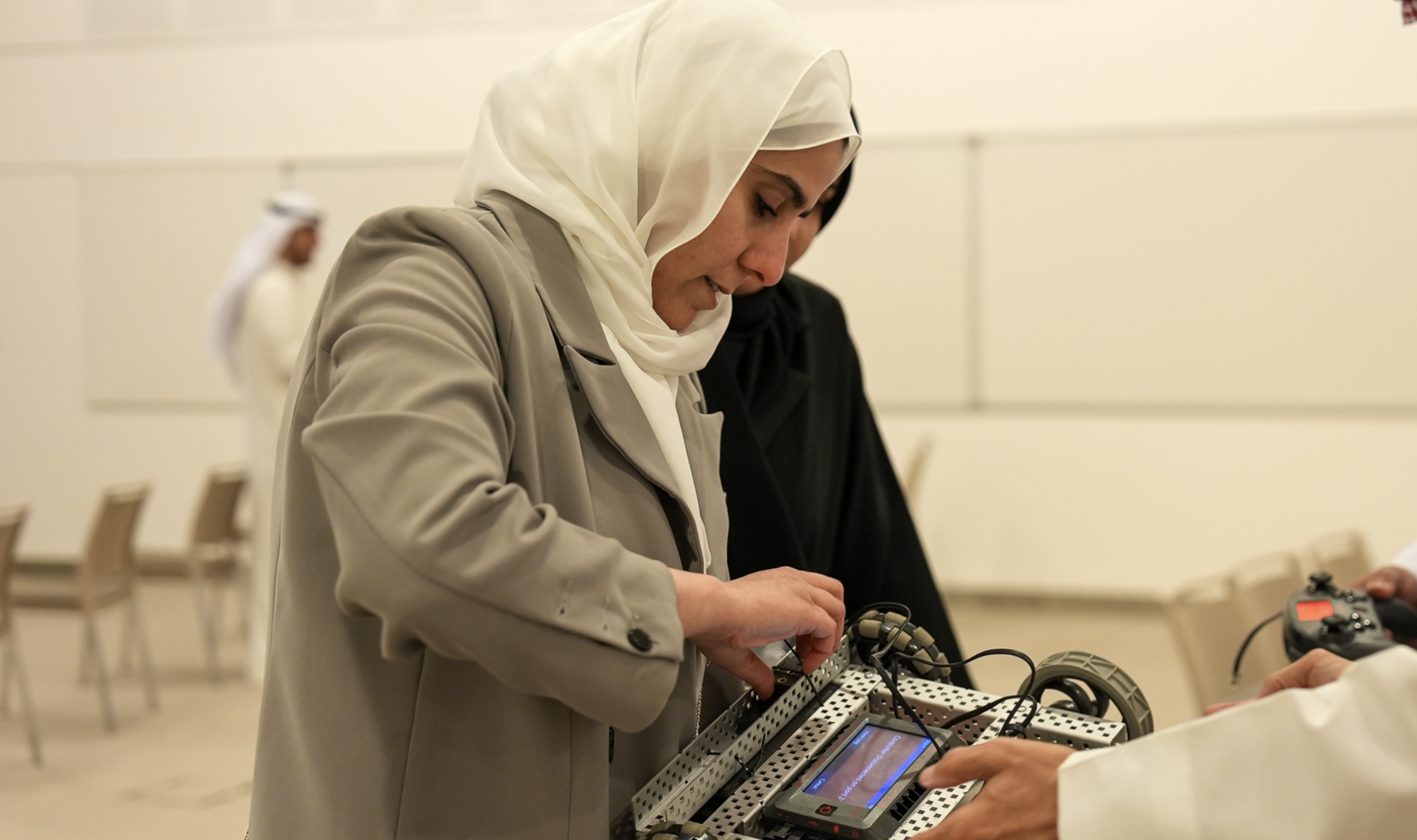
Being a VeX coach
This is my first year being a VeX coach. I was fortunate enough to be the coach for two amazing teams from ktech. The only way to describe the experience of being a coach is that you need to be a mother / father figure for a group of students. Therefore, if you want to be a good coach, you need to be the main reference point for the team and be the there for your team no matter what. You need to be loving, caring, and appreciative of everyone without expecting much in return. You need to be someone they can trust, believe in and more importantly, respect. Without these qualities, the team will most likely get side tracked, lose focus and motivation or even fall apart.
Taking responsibility
Similar to how a family functions, a coach needs to endure and to take responsibility of his team members’ actions. Guiding them towards the goal, eliminating distractions, removing obstacles and helping them understand the value of being a team. Some of them will prefer to work alone, others will get afraid and shut off. For you as a coach, you might think that the only thing that matters is achieving the objective. But you have to realized that, without a healthy team, there is no objective to achieve.
Building a healthy team
In essence, building a healthy team comes first, then achieving the objective becomes one of the possible outcomes of having a healthy team. The closer the team members are, the more they are able to understand each others strengths and weaknesses. When things don’t go as intended, they can have full trust in each other. That trust acts as the support that makes them hold on and endure and be respectful no matter what.
Lose confidence, lose the team
Once a coach loses confidence, becomes disconnected from the team or doesn’t reflect on her/his own actions, she/he will start a downward spiral of mistakes. Those mistakes might look insignificant at first, but eventually will pile up and the coach will lose control of the team. If you can’t afford to be a static reference point, unchanging, consistent and thoughtful, then my advice is to stay away from being a VeX coach. The most painful thing that you will face is when your team members revolt and start having their own agendas.
It is a long journey
As a VeX coach, you have to realize that the journey is quite long. If you want to be prepared fully for the competition and have a solid team, you need to start at least three to four months prior to the competition date (This is when the KNRC usually starts announcing for the competition and sitting up the timeline for scrimmages and the date for the local tournament). In the US, the season is even longer, lasting almost a year. You might think that 4 months is a long time, but in reality it is barely enough. Students got schedules to attend to, other clubs / responsibilities that occupy their time and some of them might be working students. Arranging face to face meetings becomes quite difficult at times. Exams, holidays and unexpected interruptions will slow down the pace significantly.
It is a team game
The other thing that plays a big role in the success and failure of a team is their ability to realize their own shortcomings and be honest about their own abilities. The main selling point of having a team is that they get to master their own roles which enables them to achieve their tasks quickly, accurately and with high standards. This way, each team member covers the other reducing stress for all of the team and making everyone able to perform without feeling pressured or overwhelmed. Based on the qualities of each team member, the coach must try to position the members in a way that provides value and supports the entire team. Therefore, it becomes crucial for the coach to be able to infer the qualities of others and understand the chemical reaction that sparks between team members once they are placed together.
Sometimes you will find students that seem to be perfect for the task, but realize that they don’t function within a team. Other times you will find students that are dying to help, but they can’t seem to find something they are good at. In both cases, you need to avoid picking those students in the first place. VeX is a team game, not a solo game. Don’t pick loan wolves and avoid burdening students who don’t fit the bill. Your responsibility as a coach is to predict both ends and prevent that conclusion from happening in the first place. It takes a keen eye, attention to details and prior knowledge of each potential member to be able to avoid those outcomes.
Students’ Roles in a VeX competition
Consider the following page from VeX Robotics Students Resources official website. In short, students need to have a decent background in multiple disciplines if they want to participate in VeX robotics. Those disciplines range from Mechanical Engineering, Electrical Engineering, Manufacturing and Computer Science to name a few. A full list can be found here.
Therefore, it will be quite challenging for a single student to comprehend this vast amount of knowledge within a short period of time. At first, some students will try to challenge this notion, but there are so many intricate details to each role which in turn can make a robotics team successful.
To simplify, students in the end can be classified into the following main roles:
- Robot Designer: Plans and designs the robot using CAD software
- Robot Builder: Builds and tweaks the robot
- Robot Programmer: Programs the sensors and the autonomous phase of the robot
- Robot Driver: Controls the robot during the match
- Engineering Notebook Manager: Maintains the Engineering Notebook and documents the team’s journey
Some students can to some extent fill in multiple roles within a team, others prefer to focus on one role only which is preferable. In the end, finding balance is essential so the student can contribute to the team in a healthy way as well as enjoy the journey.
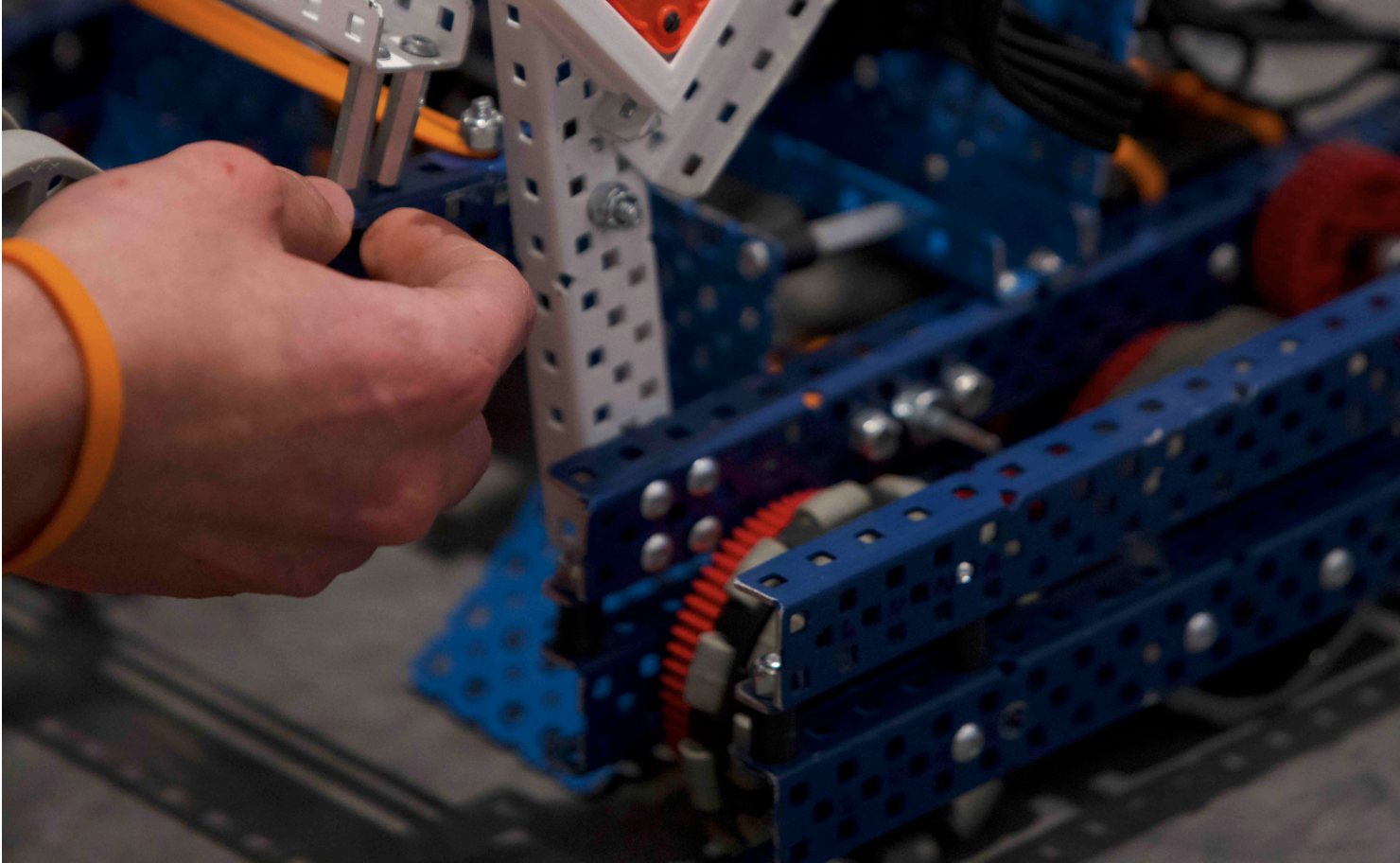
Building a robot is an exciting experience
When you build a robot, you pore in your will and energy into bringing metal, wheels, electrical components, gears, sprockets and chains to life. It is one of the most fascinating aspects of VeX. Once the robot is built, it becomes more than just wheels and motors, it gains its own personality. With time, the robot might change as well, take different forms or even be rebuilt from scratch. In that essence, the robot becomes a manifestation of the builder’s energy. It is preferable to design the robot using CAD software at first to avoid rebuilding mechanisms as it is a costly process in terms of time and money. Once the Aluminum c-channel is cut, there is no going back. Bending and reshaping the metal parts will prevent them from being reused in other robots. Not to mention that locking everything together using screws, nylocks and spacers takes time, effort and precession. Taking those mechanisms apart is also hard.
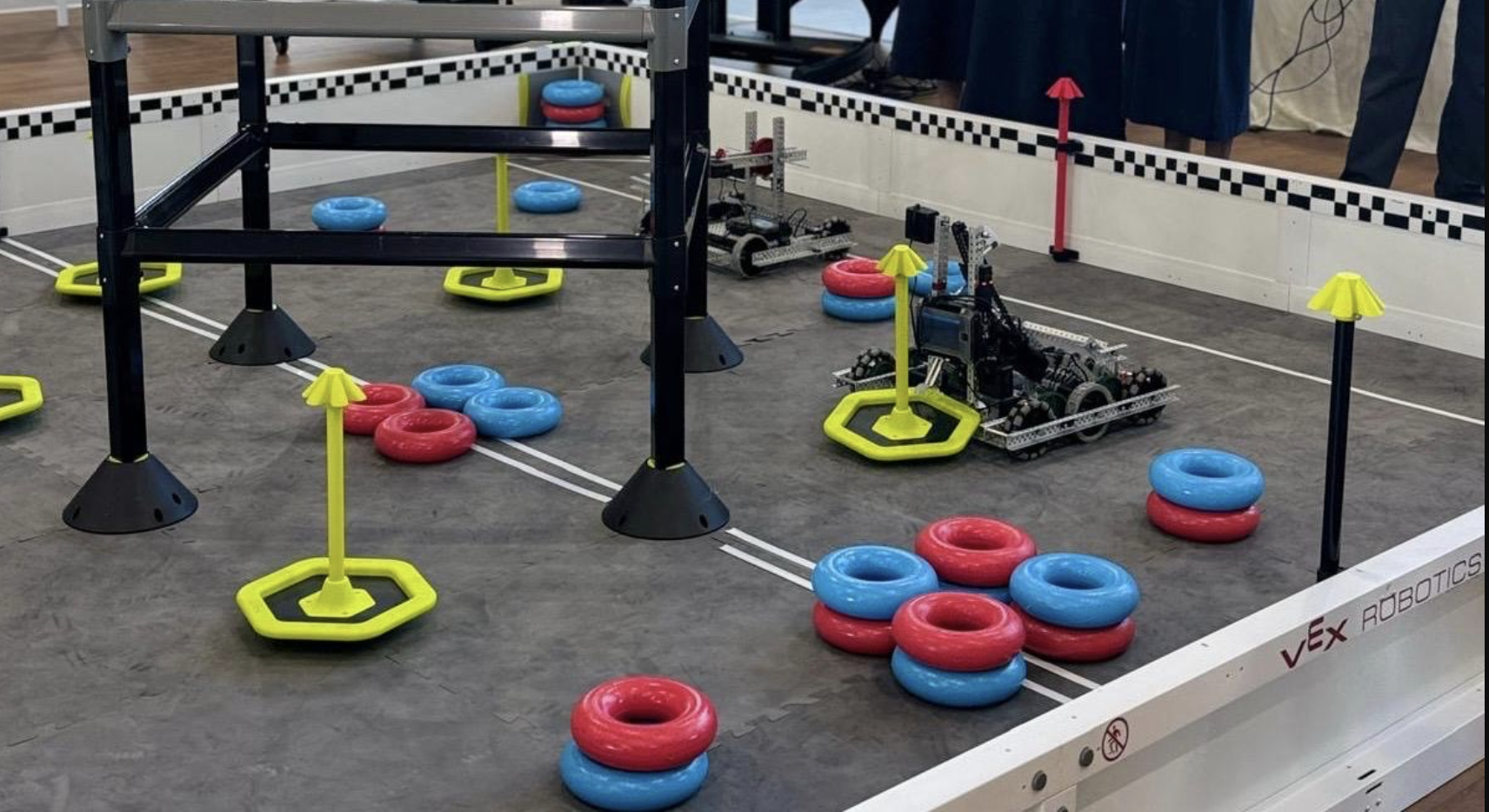
Driving a robot is a lot of stress
When you decide to become a driver, you should accept that the fate of the team will rest on your shoulders during the match. Based on the type of competition, you will have around a minute and a half to score as many points as you can to secure the win for the team. If your team is aiming to win Skills award or Tournament Champion award, then the driver will need to practice non stop and understand the game rules much better than anyone else. Therefore, clear communication between the Designer, Builder and Driver should be established as all those parties are interlocked together in order to make the robot achieve the intended goal during the match as efficiently as possible.

Documentation takes time and active participation
One of the tasks that I find crucial towards a healthy team progression is documentation. Without it, the team is essentially going blind. The Engineering notebook does not only record the aspects of what is taking place at the moment, but also contains planning and records of what should come next. As a result, the notebook provides a single source of truth to what is the team trying to achieve at the moment and what is the team is expected to achieve later. It is all about keeping everyone on the same page, pun intended.
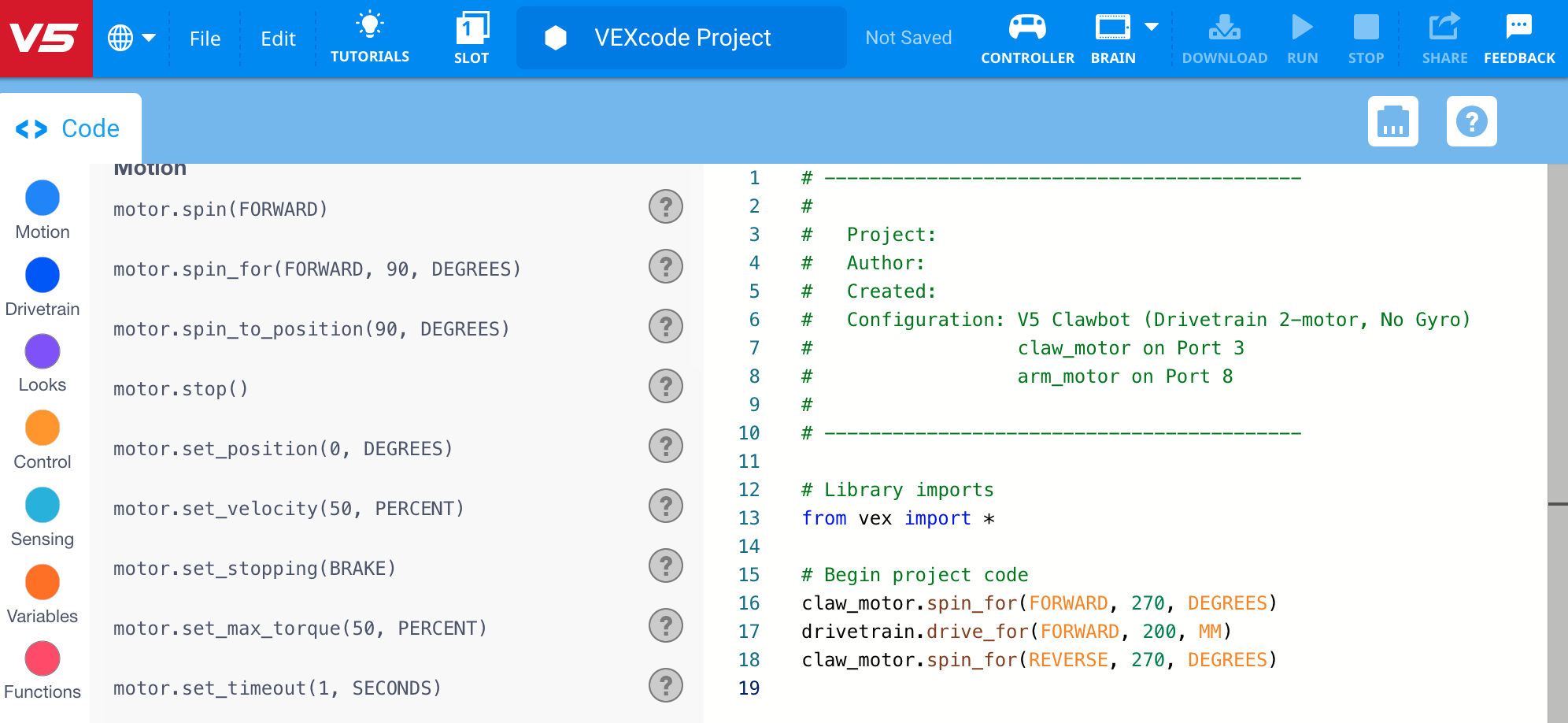
Programming the robot is an eye opener
As someone who is really into programming, I was impressed with the standard library provided by VeX for both Python and C++. The APIs are easy to use and introduces the students to a vast range of sensors and actuators to control. The student needs to learn about variables, data types, loops, flow control statements, scopes, APIs, events and much more in order to make the robot function. In addition, tweaking the robot coding is a journey not a destination. The robot code is never perfect. Movement speed, rotation, PID control, Autonomous and many more aspects need to be worked on non-stop in order to achieve better results and allow for more flexibility and future proofing. Combining data from sensors and motors together is a task that will sure make the programmer have a deeper understanding of programming concepts.
And lots more
I wanted to cover all aspects of my VeX journey, but honestly there is so much to write about. I wanted to keep this post as brief as possible while going through all the aspects that I think the average reader might be interested in. If you’d like to know more technical details, please let me know by sending me an email. I’ll make sure to write more posts regarding VeX, Robotics and education in general.

Conclusion
In the end, the youth are the future. We have to pass the torch to them as our previous teachers did. VeX is yet another way of keeping the cycle from breaking. I’m fully aware as a practiced educator that it is getting more challenging year after year to maintain high teaching standards and to keep the students engaged in the age of short attention spans, gruesome AI take over and less patience mixed with the need for instant gratification. However, this is our challenge as educators; to keep finding new ways to help the future generations learn and make use of their time constructively.
One last note, we should not get carried away as educators and get too personal during the tournament. We have to remember to stay objective, have fun and keep reminding ourselves it is about the journey, not the destination. Thats why there are many awards at VeX, which is a great way to appreciate all the efforts that each team made in different aspects of the game.
Don’t google mechatronics